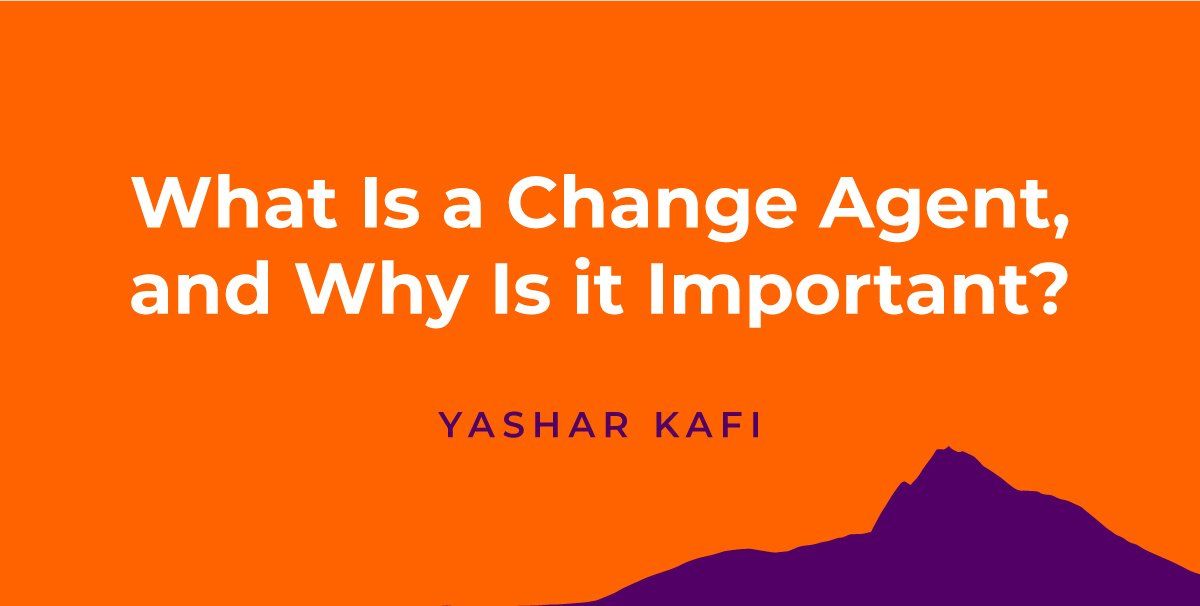What Is a Change Agent, and Why Is it Important?
There are a lot of buzzwords and lingo out there, each unique to different industry niches. Some of this terminology can seem daunting and complicated when you’re first hearing it. I’ve found that—for the most part—these buzzwords and lofty lingo (that super technical-sounding terminology) are usually very easily explained (and understood) if broken down simply by someone who “speaks the language.” So, in short, I figured an article about one hot buzzword that comes to mind would be fitting.
And the term of the day is change agent. Allow me to translate:
Change agent is a broad term, right? It usually refers to a person, a company, or a group that helps initiate and manage change in any organization. Simple, right? Further breaking this down in my vernacular: A change agent, for me, is the entity in charge of managing change in a digital transformation initiative. Now, follow me on this, as I am writing from my perspective: the outside, third-party, unbiased activist—the one whose role is to help organizations change. At the very core, they are like rock star consultants.
Now, I may be biased, but with that perspective, this makes change agents vital to the success of any change effort. This success will inevitably depend almost solely (at least 90%) on the strong and results-driven relationship between that change agent and the key decision-makers within the organization.
I can claim the importance of this role with complete confidence because, throughout my entire life, I’ve been a change agent myself. To clarify: In a consultative manner, I have been a consensus change agent, where I’m coming in to drive a consensus-driven digital transformation.
Not only is it pivotal, but the role of change agent requires finesse. I’ll explain with a hypothetical scenario, but one I’ve seen far too often: Imagine that group A is coming into group B and basically saying, “Well, this is how we do it….” even though group B’s kind of culture, mantra, technology platform—everything—is distinctly different than what these guys know.
And now they’re “barging in,” breaking and disrupting the positive flow of organizational capital, as well as “breaking” people’s morale and spirits. They do not fully understand that the entire goal of a quality change agent is to build a consensus change as opposed to ushering in this type of dramatic (and uber disruptive) seismic change.
The harsh reality is that you won’t always be welcomed with open arms. After all, people aren’t always big fans of change. They may see it as scary, disruptive, annoying (or all of the above)—and by extension—you as a change agent are also seen as a threat, a disruption, an annoyance.
So, the key is to show exactly how you can help, in a way they can see and understand. And that they can learn to open themselves up to embracing (or at least be receptive to)—all of them. I know, it’s a tall order.
To do this effectively will require a strategic POA (plan of attack). Change agents need a clear vision and a clear strategy. You must be patient, persistent, and understanding, but you likewise (and yes, simultaneously) have to be able to ask tough questions, not just talk your way through stuff. And, this is really important: If you’re going to talk your way through things, make sure you understand what you’re talking about.
Be knowledgeable and lead by example. In this way, you will build trust, build consensus, and ultimately, build and strengthen relationships—all of which paves the way to progress and solutions.
Bottom Line: Don’t just come in and say, “This is how we are used to doing this, and how we’re going to do it now.” That simply won’t fly.




